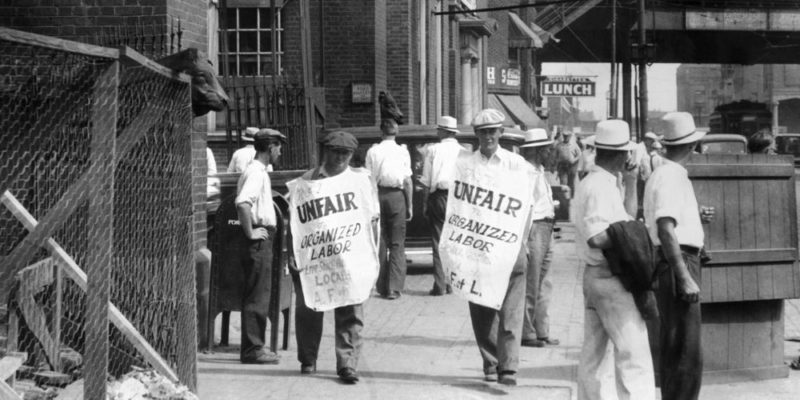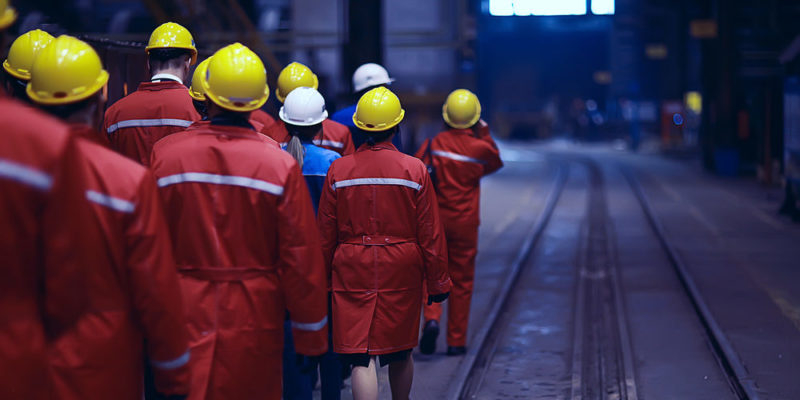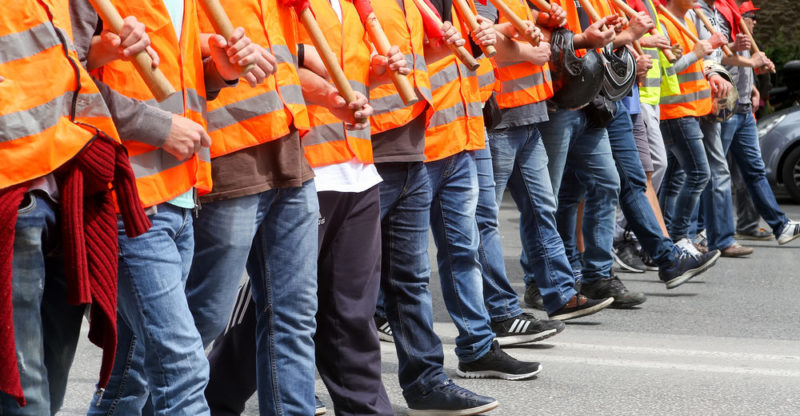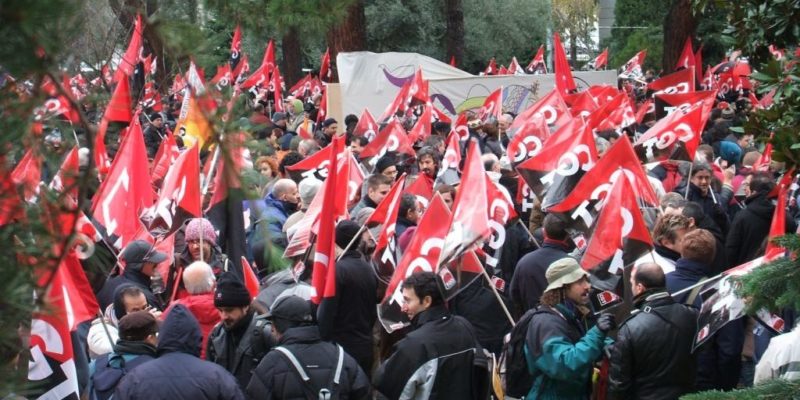We explain what unionism is, what its functions are, and how it is classified. Also, its general characteristics, structure, and more.
What is Unionism?
Unionism is the adherence of labor movements to labor organization assemblies known as “unions”, in which workers meet to discuss their related positions vis-à-vis employers and governments, independently and by consensus, endowed with leadership and a democratically elected spokesperson.
The unions appeared for the first time in the 19th century, during the birth of industrial capitalism, as a result of the vindictive struggle of the proletarian sector, strongly influenced by the parties and organizations of the left.
" Guild ", " union " and " union " are ways to call this type of work organization, currently protected by universal human rights, which grant workers any company freedom of association and trade union organization.
Origins of unionism

In the capitalist society of the 19th century, the economic crisis and the oppressive conditions in which the working mass lived produced the rise of protest and the movements of the social organization of workers and other groups.
Within the framework of the struggle for the direct and universal vote, or even for the abolition of slavery, industrial workers produced the first forms of union organization known as societarismo (by workers' societies ).
This struggle would be sustained by the hand of the Communist Internationals and the emergence of the notions of Right to Work and the creation of various international associations of workers' unions, which eventually led to the International Labor Organization (of the UN ), governed in a manner tripartite by employers, unions and the government.
Modern unionism
The 20th century reaffirmed the place of trade unions in the world labor order, and three groups or federations of labor unions were organized globally:
- World Federation of Trade Unions (WSF), of a communist nature.
- International Confederation of Free Trade Unions, of a social-democratic nature.
- World Confederation of Labor, led by the Christian Democracy.
Functions of a union
 The functions of a union require that it act collectively, that is, its fundamental purpose is to coordinate the protest, pressure, or benefits so that the whole of the working class, or at least a specific segment of it (the workers of a specific union) are benefited as a whole and do not compete with each other to enjoy the grace of the employer, but respond as an organized collective.
The functions of a union require that it act collectively, that is, its fundamental purpose is to coordinate the protest, pressure, or benefits so that the whole of the working class, or at least a specific segment of it (the workers of a specific union) are benefited as a whole and do not compete with each other to enjoy the grace of the employer, but respond as an organized collective.The unions carry out collective bargaining to establish the terms of the hiring in a specific labor union, according to the specific needs of their workers and the specific characteristics of the work.
Thus, the unions are part of the entities summoned in the mediations between the State, the workers, and the employers, as an autonomous entity that ensures the defense of the rights of their represented.
Union types
 There are different types of union, such as:
There are different types of union, such as:
- Guild or trade. It is made up of workers who share trade or profession. For example, a postmen's union.
- Of the company. It is made up of the workers who work in the same company, regardless of the position they occupy in it (except for management personnel, of course). For example, the union of the workers of the electricity company.
- Industry or branch. It groups together the workers of a specific industrial, commercial, or service branch or activity, who despite not having the same trade, are part of the branch as a whole. For example, the metalworkers union.
- Independent. Unions for self-employed, non-salaried workers. For example, a union of freelance workers.
Union structure
The unions have their internal structure, with members and representatives democratically elected by their members, as a small form of government.At the macro level, they are integrated with other unions in Federations by branch or trade, in order to act jointly despite working for different companies. These federations are grouped into Trade Union Centrals, which are entities for negotiation and dialogue between the unions of a country or between their federations; which in turn integrate world trade union movements or on a global scale.
Employers' unions
 In some countries, there is the possibility of employers' unions, or employers' unions, called employers' organizations, which ensure a consensual and common negotiation between employers and their workers. These organizations are subject to the same political rules as the workers' unions.
In some countries, there is the possibility of employers' unions, or employers' unions, called employers' organizations, which ensure a consensual and common negotiation between employers and their workers. These organizations are subject to the same political rules as the workers' unions.
Trade unionists
Spokespersons for a specific union are called syndicalists. These spokespersons enjoy a level of exposure and political importance in society, which often translates into public figuration and the risks that it entails. A trade unionist requires leadership and negotiation skills that allow him to organize his colleagues as well as possible.
Political pressure measures of trade unionism
 Trade unions have played an extremely important role in resisting not only ruthless forms of labor exploitation such as those that existed in the early 19th century and even in some Third World countries but also as forms of the collective organization against dictatorships, regimes totalitarians, or neoliberal democracies.
Trade unions have played an extremely important role in resisting not only ruthless forms of labor exploitation such as those that existed in the early 19th century and even in some Third World countries but also as forms of the collective organization against dictatorships, regimes totalitarians, or neoliberal democracies.Through their capabilities to strike, protest, and joint action, unions are a major political force in most nations around the globe.
Ideology of unionism
 Many unions are openly governed by an ideological style of a political school, usually on the left, such as communism, anarchism, socialism, or even on the right, such as the National-syndicalism of Franco's Spain, also known as Falangism.
Many unions are openly governed by an ideological style of a political school, usually on the left, such as communism, anarchism, socialism, or even on the right, such as the National-syndicalism of Franco's Spain, also known as Falangism.This ideological and vindictive union can give rise to diverse movements. For example, anarcho-syndicalism is a form of political organization that combines the workers' struggle with the policies of anarchism, applied to the specific field of work.
Global unionism
In the era of globalization, trade unionism has managed to incorporate itself into the idea of a global and interconnected village, taking important steps towards the constitution of unique international unions, such as the European Trade Union Confederation (ETUC) or the International Trade Union Confederation (ITUC). ) which has 168 million affiliates worldwide.The above content published at Collaborative Research Group is for informational and educational purposes only and has been developed by referring to reliable sources and recommendations from experts. We do not have any contact with official entities nor do we intend to replace the information that they emit.
MA student of the TransAtlantic Masters program at UNC-Chapel Hill. Political Science with a focus on European Studies. Expressed ideas are open to revision. He not only covers Technical articles but also has skills in the fields of SEO, graphics, web development and coding. .
Leave a reply
Your email address will not be published. Required fields are marked *Recent post

Sport: What Is It, Types, Risks, Features, Characteristics and Examples

Dogs: Emergence, Features, Characteristics, Feeding and Breeds

Story: Definition, Elements, Structure, Features and Characteristics

